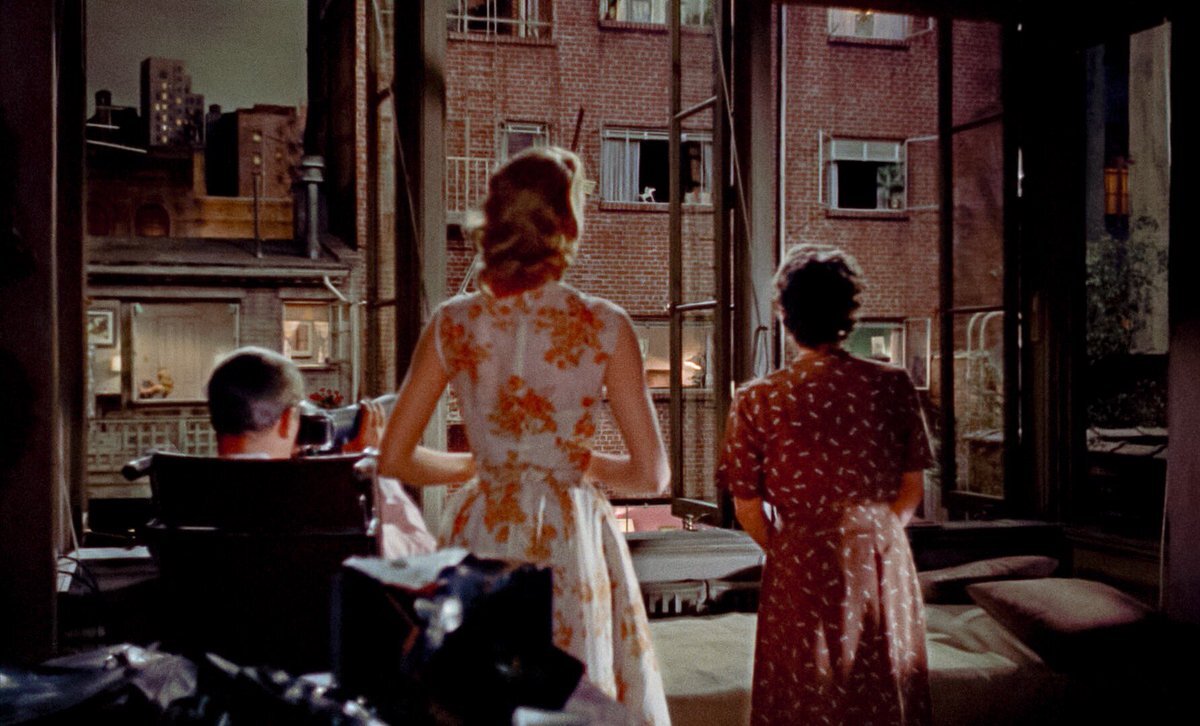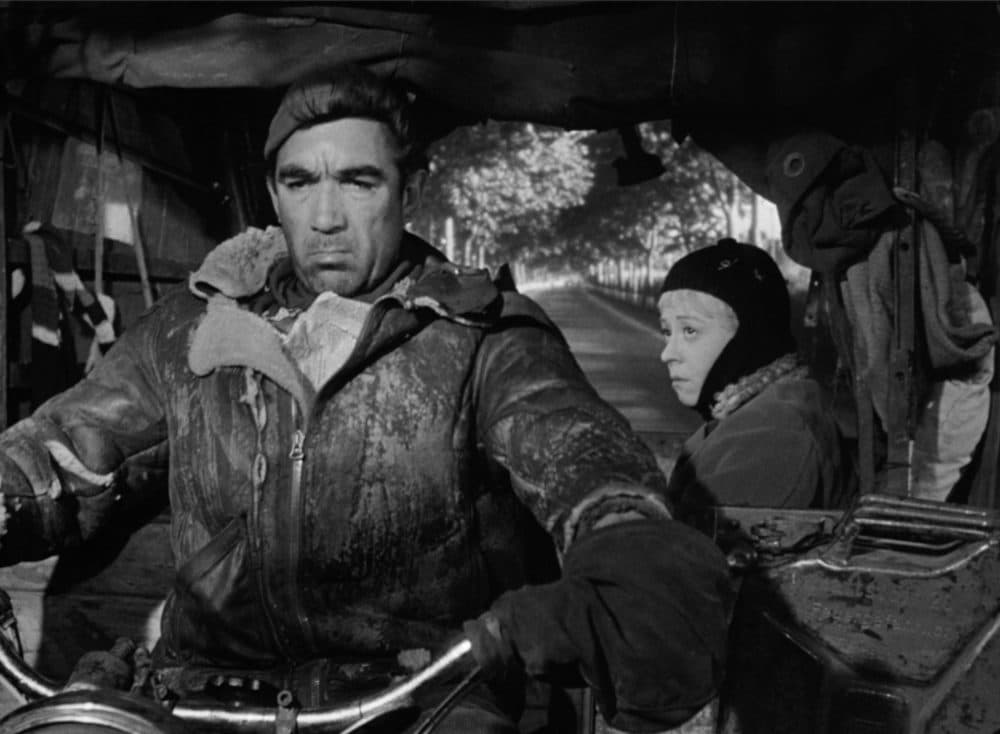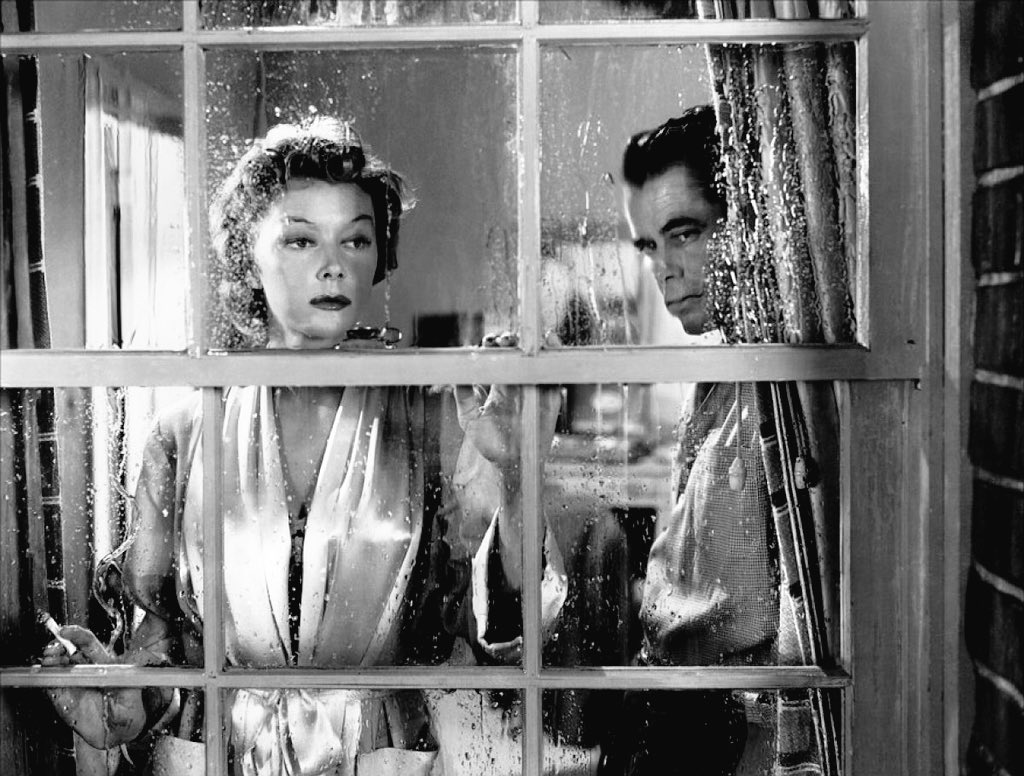my favorite movies of 1954:
(1) Rear Window
(2) La Strada
(4) Human Desire
favorite of 1954:
Rear Window(James Stewart, Grace Kelly, Thelma Ritter, Raymond Burr, Wendell Corey. Directed by Alfred Hitchcock.)Jimmy Stewart is a photojournalist stuck in his New York City apartment with his leg in a cast, having been injured during a photo shoot. He resists getting engaged to his girlfriend, Grace Kelly, because he finds it hard to imagine her career as a fashion model coexisting with his ruggedly adventurous, globe-trotting lifestyle. But she’ll end up venturing farther than he does when they team up as amateur detectives.
Ebert wrote that “[t]he hero” of Rear Window, by which he meant Jimmy Stewart, “is trapped in a wheelchair, and we’re trapped, too — trapped inside his point of view, inside his lack of freedom and his limited options”:
When he passes his long days and nights by shamelessly maintaining a secret watch on his neighbors, we share his obsession. It’s wrong, we know, to spy on others, but after all, aren’t we always voyeurs when we go to the movies? Here’s a film about a man who does on the screen what we do in the audience — look through a lens at the private lives of strangers.
Ebert was right about the movie’s meta quality but wrong to suggest that there’s only one “hero.”
Stream Rear Window on Amazon Prime or these sites.
2nd favorite of 1954:
[Italian, meaning “The Road”](Giulietta Masina, Anthony Quinn, Richard Basehart. Directed by Federico Fellini.)
With this breakthrough film, Federico Fellini launched both himself and his wife and collaborator Giulietta Masina to international stardom, breaking with the neorealism of his early career in favor of a personal, poetic vision of life as a bittersweet carnival. The infinitely expressive Masina registers both childlike wonder and heartbreaking despair as Gelsomina, loyal companion to the traveling strongman Zampanò (Anthony Quinn, in a toweringly physical performance), whose callousness and brutality gradually wear down her gentle spirit. … La Strada possesses the purity and timeless resonance of a fable and remains one of cinema’s most exquisitely moving visions of humanity struggling to survive in the face of life’s cruelties.
Stream La Strada on the Criterion Channel (with extras including commentary), Max, or Kanopy. If you don’t subscribe to the Criterion Channel, try free 14-day trial.
3rd favorite of 1954:
(Ray Milland, Grace Kelly, Robert Cummings. Directed by Alfred Hitchcock.)
Stream Dial M for Murder on Tubi (free with ads), Kanopy, or these sites.
4th favorite of 1954:
Human Desire(Gloria Grahame, Glenn Ford, Broderick Crawford. Directed by Fritz Lang.)This movie has the same leading man and woman and the same director as The Big Heat, one of my favorites from 1953. The Big Heat is far more acclaimed, but I like Human Desire just as much. It has a greater focus on a smaller number of characters, giving it a more stark, personal feel.
This is the fifth movie on my list of “favorite movies from each year of the past 101 years” with a memorable performance by Gloria Grahame. Ebert’s review of The Big Heat includes an appreciation of Grahame which also applies to Human Desire:
her energy is the best reason to see the film. There was something fresh and modern about Grahame; she’s always a little ditzy, as if nodding to an unheard melody. She was … sassy but in a tired and knowing way, and she had a way of holding her face and her mouth relatively immobile while she talked, as if she was pretending to be well-behaved. “It wasn’t the way I looked at a man,” she said, “it was the thought behind it.”
If you’re not familiar with Gloria Grahame from anything other than It’s a Wonderful Life (one of my favorites of 1946), I recommend watching Human Desire, The Big Heat, Sudden Fear (my favorite of 1952), or In a Lonely Place (one of my favorites of 1950).
Grahame could deliver a great line with a devastating deadpan; she’s the one who said the quotes I’ve chosen from both The Big Heat and Human Desire:
Stream Human Desire on Tubi (free with ads).
5th favorite of 1954:
Sansho the Bailiff[Japanese: Sanshō Dayū] 山椒大夫 (Yoshiaki Hanayagi, Kyōko Kagawa, Kinuyo Tanaka, Eitarō Shindō. Directed by Kenji Mizoguchi.)The premise: “When an idealistic governor disobeys the reigning feudal lord, he is cast into exile, his wife and children left to fend for themselves and eventually wrenched apart by vicious slave traders.”
The New Yorker’s Anthony Lane had a strong reaction:I have seen [Sansho the Bailiff] only once, a decade ago, emerging from the cinema a broken man but calm in my conviction that I had never seen anything better; I have not dared watch it again, reluctant to ruin the spell, but also because the human heart was not designed to weather such an ordeal. The film itself is a tale of broken men and women, or of those bent to the breaking point by the harrying furies of society. …
Stream it on the Criterion Channel, which has extras including commentary. If you don’t subscribe, try a free 14-day trial. Or rent it on one of these sites.
Click here for the full list of my favorite movie(s) of each year from 1920 to 2020.


.jpg)





Comments
Post a Comment
Thanks for submitting a comment on my movie blog! 🎬 Your comment won’t show up here right away. 😐 To make sure your comment gets seen, I recommend sharing this post on social media and saying whatever you feel like! 🤓